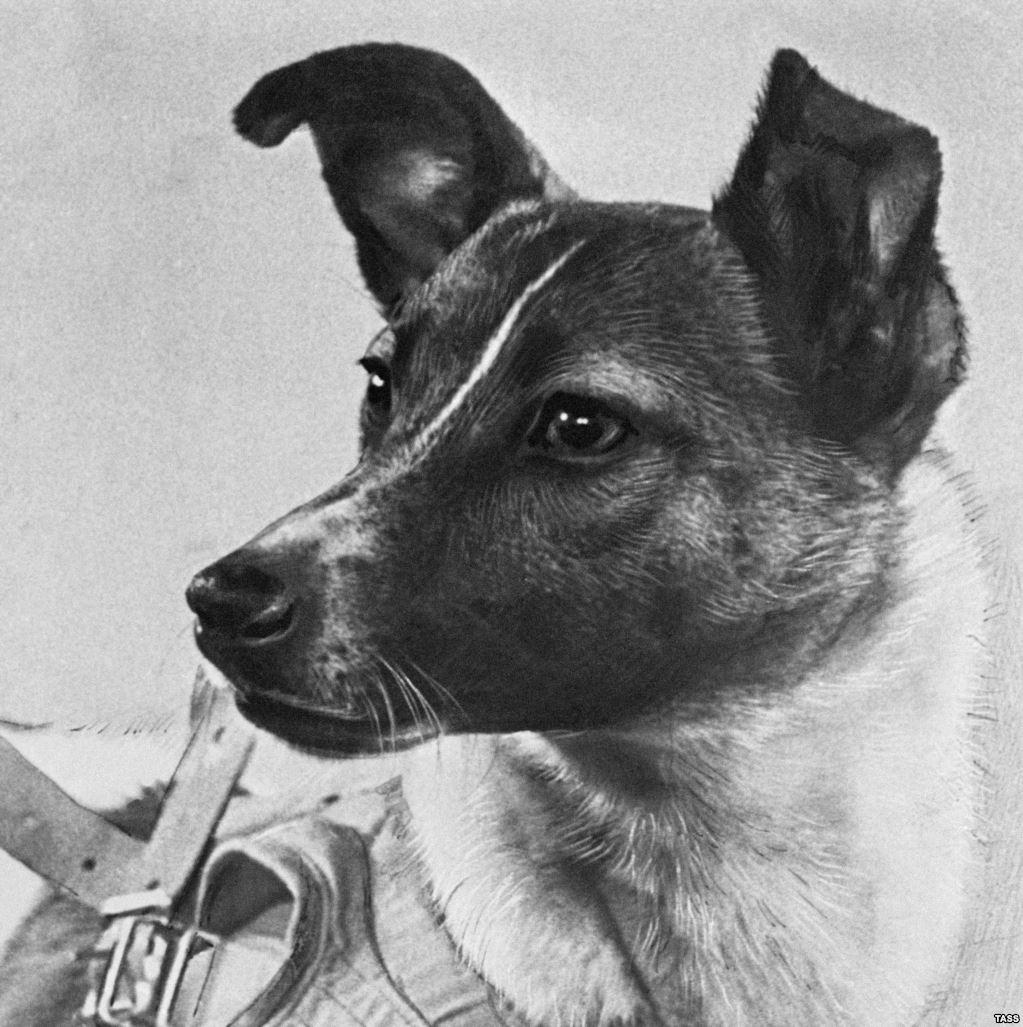Space + Art
Figure 1: Laika, the first dog to visit space from "What was the first animal sent into space?"
Although the possibilities to explore space firsthand was not possible until Laika’s launch in 1957, artists were not bound to explore the Earth alone as they looked upon the stars. Copernicus was a leading figure in Poland in the 1500s for his findings in astronomy such as the solar system with the sun in the center. Advances would be made 100 years later with telescopes which allowed for further exploration and understanding of space even today. In art, specifically, artists have been captivated by the work of the stars as evident by famous pieces like Van Gogh’s “Starry Night”. The curiosity of space makes it an artistic endeavor itself.
Figure 2: The Solar System from "Nicolaus Copernicus"
With the ability for humans to explore the new bounds of space, artists and scientists alike took the greatest interest. The genre of science fiction surged during the space race and established cinematic pieces such as Star Wars and Arrival in which humans interact with or are in the setting space. Both have invoked curiosity of the unknown and embracing its strange nature.
Artist and astronaut, Gennadi Manakov, combines his love for space and art by considering how gravity affects artists’ perception of their art. Artists on earth are bound to what their art looks like as gravity holds it a certain way, but Manakov’s piece Cosmic Dancer breaks those boundaries as the “gravity” of space determines how the piece will be perceived. It is an interesting mix of art that takes advantage of space and science’s landscape.
References:
1) “What Was the First Animal in Space?” Royal Museums Greenwich, www.rmg.co.uk/stories/topics/what-was-first-animal-space.
2) Vesna, Victoria “Space Exploration + Art” Lecture Part 1. DESMA 9. UCLA. 31 May. 2024
3) Westman, Robert S. “Nicolaus Copernicus | Biography, Facts, Nationality, Discoveries, Accomplishments, and Theory.” Encyclopedia Britannica, 20 May 2024, www.britannica.com/biography/Nicolaus-Copernicus.
4) Vesna, Victoria “Space Exploration + Art” Lecture Part 6. DESMA 9. UCLA. 31 May. 2024
5) Gravity and Art: Space Art Arthur Woods Cosmic Dancer. www.cosmicdancer.com/gravity_and_art.php.




Great post!! I really enjoyed the cosmic dancer and the differences in location changing the sculpture itself. There are many things that artists and people take for granted when creating and expressing. However, in the said piece everything is accounted for. Gravity really is fascinating.
ReplyDeleteI really enjoyed reading your blog post! You did a fantastic job linking the history of space exploration with artistic expression. It's fascinating to see how Copernicus' astronomical discoveries and the advent of the telescope paved the way for both scientific and artistic advancements. Your mention of iconic works like Van Gogh’s “Starry Night” and sci-fi classics like "Star Wars" and "Arrival" really brought the topic to life. I especially loved the part about Gennadi Manakov's "Cosmic Dancer"—it's such a cool example of how space can influence art in unexpected ways. Great work!
ReplyDelete